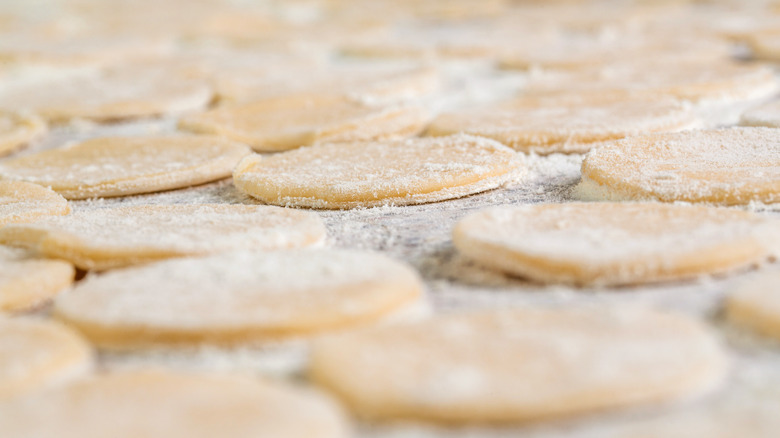Can You Use Self-Rising Flour To Make Cookies?
Self-rising flour is a convenient ingredient that is crucial to easy-to-make two-ingredient recipes like go-to party favor biscuits or even ice cream pancakes. However, we spoke with Dennis Littley, chef and recipe expert at Ask Chef Dennis, about using self-rising flour in cookies, and he assured us that it wasn't the best idea.
"Self-rising flour contains baking powder and salt, which makes cookies puffier and less dense compared to using all-purpose flour with baking soda," he says. "However, it can throw off the balance of a cookie recipe designed for specific leaveners."
While using self-rising flour may sound convenient, the adjustments and math required to use it effectively in different baking recipes often creates more work than simply measuring out the right amounts of the correct leaveners yourself. Leaveners are potent ingredients in small doses, so if your math is even the slightest bit off, you risk sabotaging your recipe.
"Stick with all-purpose flour and the leavening agents the recipe calls for unless you're specifically adapting a recipe for self-rising flour," Littley says.
When a recipe calls for either baking soda or baking powder, it's not like someone preferring Coke over Pepsi. While it's possible to substitute baking soda with baking powder to achieve the same degree of leavening, it still produces different results.
Difference in using baking soda and baking powder in cookies
Aside from their textural differences, baking soda and baking powder have unique chemical compositions. Baking soda is pure sodium bicarbonate, so it needs acid like vinegar or buttermilk to produce CO2 and leaven flour. Baking powder, on the other hand, has acid, like cream of tartar, so it can leaven on its own. A mix of baking soda and baking powder can make for better cookies, balancing the speed of a dough's leavening, but it requires experimentation unless you have a recipe that gives you the right ratio.
The acid required to activate baking soda's leavening properties raises the pH of cookie dough. This coagulates proteins, such as the ones in milk and eggs, giving the dough more time to spread out before it firms up. Baking soda often produces a more uniform thickness in cookies, which is great for some recipes, especially if you like them crunchy and thin, like gingerbread or Thin Mints.
Baking powder dissolves in liquids and produces CO2 when exposed to heat. However, it balances the pH of dough rather than raises it, so your cookies have little time to spread out. Instead, the leavening makes them puff up and become cakier. This is ideal for softer cookies like sugar cookies or chewy chocolate chip.


